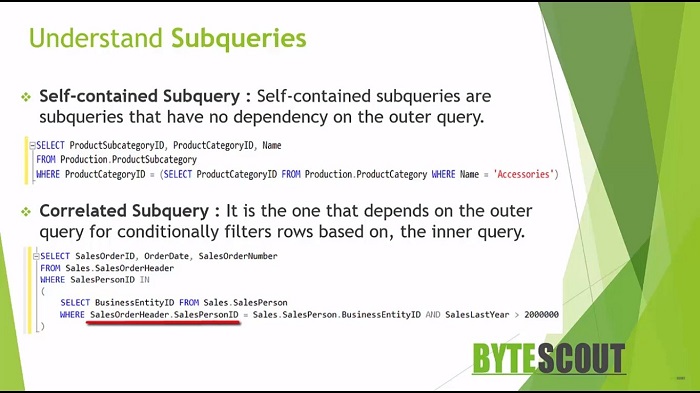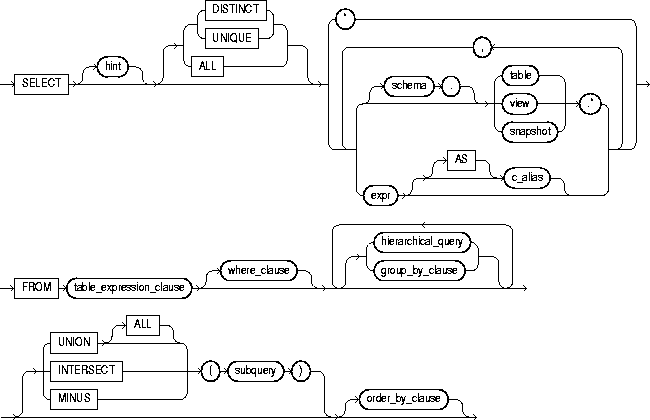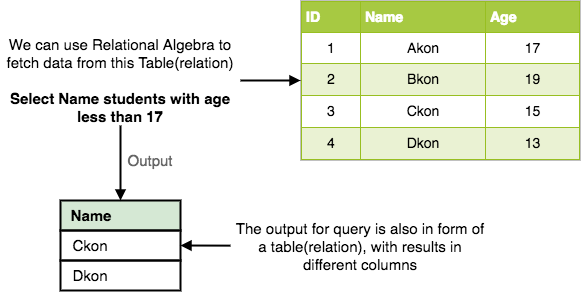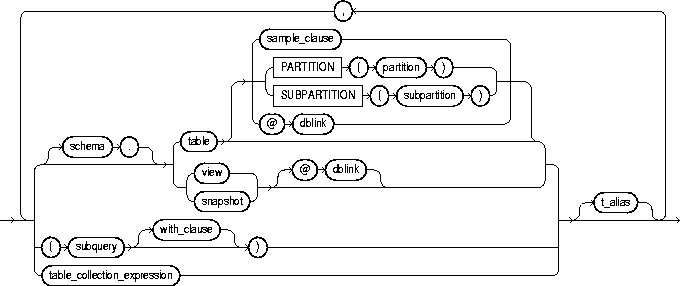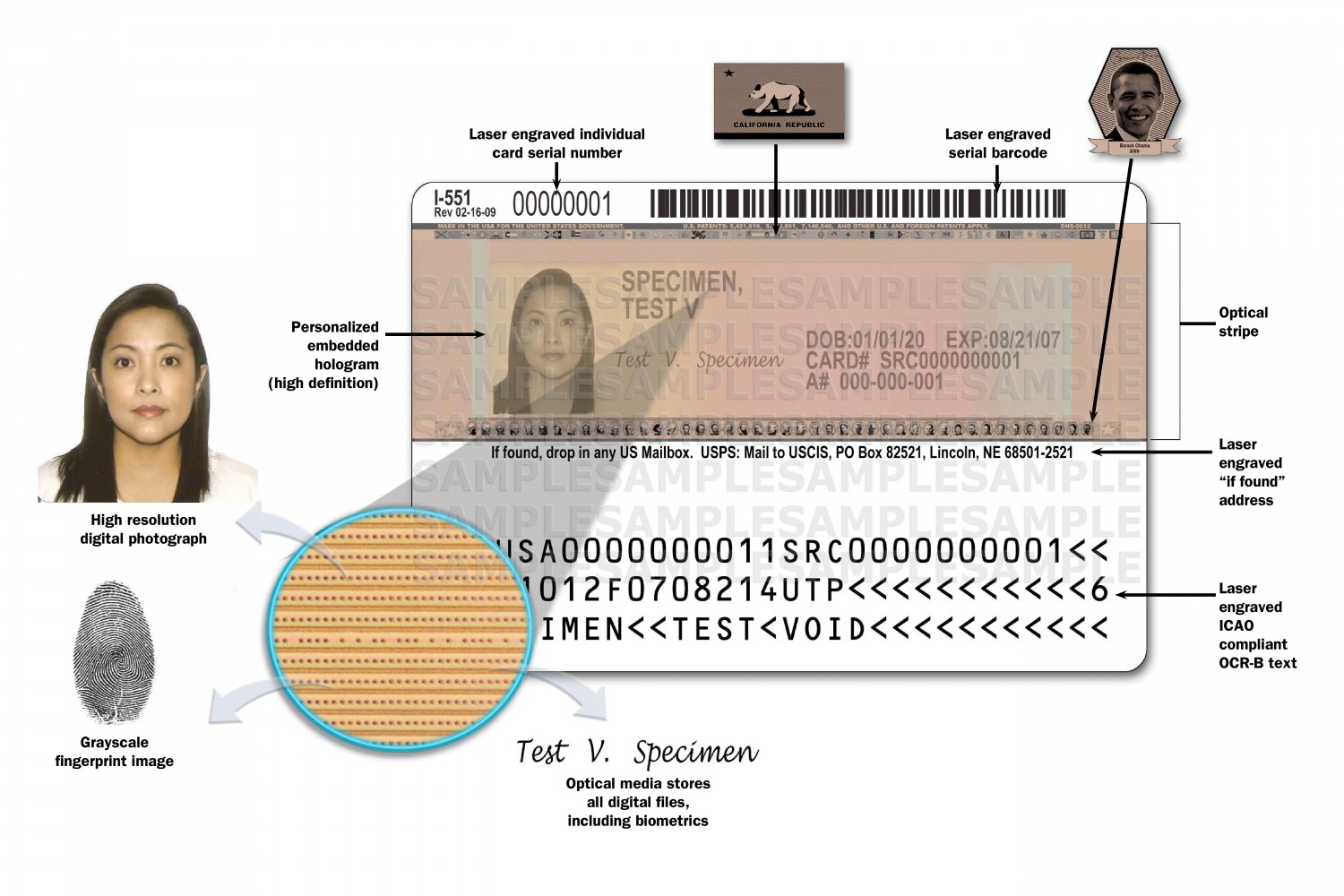The GROUP BY clause groups together rows in a table with non-distinct values for the expression in the GROUP BY clause. For multiple rows in the source table with non-distinct values for expression, theGROUP BY clause produces a single combined row. GROUP BY is commonly used when aggregate functions are present in the SELECT list, or to eliminate redundancy in the output. There's an additional way to run aggregation over a table.
If a query contains table columns only inside aggregate functions, the GROUP BY clause can be omitted, and aggregation by an empty set of keys is assumed. Knowing how to use a SQLGROUP BY statement whenever you have aggregate functions is essential. In most cases, when you need an aggregate function, you must add aGROUP BY clause in your query too. The first must contain a distinct first name of the employee and the second – the number of times this name is encountered in our database. GROUP BY enables you to use aggregate functions on groups of data returned from a query. FILTER is a modifier used on an aggregate function to limit the values used in an aggregation.
All the columns in the select statement that aren't aggregated should be specified in a GROUP BY clause in the query. Once the rows are divided into groups, the aggregate functions are applied in order to return just one value per group. It is better to identify each summary row by including the GROUP BY clause in the query resulst. All columns other than those listed in the GROUP BY clause must have an aggregate function applied to them.
The GROUP BY clause is often used in SQL statements which retrieve numerical data. It is commonly used with SQL functions like COUNT, SUM, AVG, MAX and MIN and is used mainly to aggregate data. Data aggregation allows values from multiple rows to be grouped together to form a single row. The first table shows the marks scored by two students in a number of different subjects. The second table shows the average marks of each student.
Group By Clause Generally, these functions are aggregate functions such as min(),max(),avg(), count(), and sum() to combine into single or multiple columns. It uses the split-apply-combine strategy for data analysis. The GROUP BY clause groups identical output values in the named columns. Every value expression in the output column that includes a table column must be named in it unless it is an argument to aggregate functions. GROUP BY is used to apply aggregate functions to groups of rows defined by having identical values in specified columns.
ROLLUP is an extension of the GROUP BY clause that creates a group for each of the column expressions. Additionally, it "rolls up" those results in subtotals followed by a grand total. Under the hood, the ROLLUP function moves from right to left decreasing the number of column expressions that it creates groups and aggregations on. Since the column order affects the ROLLUP output, it can also affect the number of rows returned in the result set. The Group by clause is often used to arrange identical duplicate data into groups with a select statement to group the result-set by one or more columns.
This clause works with the select specific list of items, and we can use HAVING, and ORDER BY clauses. Group by clause always works with an aggregate function like MAX, MIN, SUM, AVG, COUNT. The above query includes the GROUP BY DeptId clause, so you can include only DeptId in the SELECT clause. You need to use aggregate functions to include other columns in the SELECT clause, so COUNT is included because we want to count the number of employees in the same DeptId. The GROUP BY clause defines groups of output rows to which aggregate functions can be applied.
The ORDER BY clause specifies a column or expression as the sort criterion for the result set. If an ORDER BY clause is not present, the order of the results of a query is not defined. Column aliases from a FROM clause or SELECT list are allowed. If a query contains aliases in the SELECT clause, those aliases override names in the corresponding FROM clause. It is not permissible to include column names in a SELECT clause that are not referenced in the GROUP BY clause. The only column names that can be displayed, along with aggregate functions, must be listed in the GROUP BY clause.
Since ENAME is not included in the GROUP BYclause, an error message results. The HAVING clause in a SELECT specifies a condition to apply within a group or aggregate. In other words, HAVING filters rows after the aggregation of the GROUP BY clause has been applied.
Since HAVING is evaluated after GROUP BY, it can only reference expressions constructed from grouping keys, aggregate expressions, and constants. (These are the same rules that apply to expressions in the SELECT clause of a GROUP BY query.) A HAVING clause must come after any GROUP BY clause and before any ORDER BY clause. Results from a HAVING clause represent groupings or aggregations of original rows, whereas results from a WHERE clause are individual original rows.
You must use the aggregate functions such as COUNT(), MAX(), MIN(), SUM(), AVG(), etc., in the SELECT query. The result of the GROUP BY clause returns a single row for each value of the GROUP BY column. Otherwise, each column referenced in the SELECT list outside an aggregate function must be a grouping column and be referenced in this clause. All rows output from the query that have all grouping column values equal, constitute a group. All the expressions in the SELECT, HAVING, and ORDER BY clauses must be calculated based on key expressions or on aggregate functions over non-key expressions . In other words, each column selected from the table must be used either in a key expression or inside an aggregate function, but not both.
Use theSQL GROUP BYClause is to consolidate like values into a single row. The group by returns a single row from one or more within the query having the same column values. Its main purpose is this work alongside functions, such as SUM or COUNT, and provide a means to summarize values. The GROUP BY clause is a SQL command that is used to group rows that have the same values.
Optionally it is used in conjunction with aggregate functions to produce summary reports from the database. If you don't use GROUP BY, either all or none of the output columns in the SELECT clause must use aggregate functions. If all of them use aggregate functions, all rows satisfying the WHERE clause or all rows produced by the FROM clause are treated as a single group for deriving the aggregates.
The aggregate functions do not include rows that have null values in the columns involved in the calculations; that is, nulls are not handled as if they were zero. If the WITH TOTALS modifier is specified, another row will be calculated. This row will have key columns containing default values , and columns of aggregate functions with the values calculated across all the rows (the "total" values). In conclusion, we didn't say that the SQLGROUP BY clause is one of the most powerful tools out there for no reason. It is preferred over the SELECT DISTINCT statement because it can be combined with aggregate functions. You can also use it with SQLORDER BY. However, you must make sure that you keep the right order when writing it.
Which SQL Query Must Have Must Have A Group By Clause But this technique is constantly being applied in queries, as it clarifies the analysis undertaken. If you are interested in learning about what else you can combine with the GROUP BY statement, you can learn all about the HAVING clause. Aggregate functions are functions that take a set of rows as input and return a single value.
In SQL we have five aggregate functions which are also called multirow functions as follows. The GROUP BY clause is part of the SQL SELECT statement. Optionally it is used in conjunction with aggregate functions to produce the resulting group of rows from the database. While the first query is not needed, I've used it to show what it will return. I did that because this is what the second query counts. In some cases, MySQL is able to do much better than that and avoid creation of temporary tables by using index access.
Here, you can add the aggregate functions before the column names, and also a HAVING clause at the end of the statement to mention a condition. Having Clause is basically like the aggregate function with the GROUP BY clause. The HAVING clause is used instead of WHERE with aggregate functions. While the GROUP BY Clause groups rows that have the same values into summary rows.
The having clause is used with the where clause in order to find rows with certain conditions. The having clause is always used after the group By clause. Adding a HAVING clause after your GROUP BY clause requires that you include any special conditions in both clauses. If the SELECT statement contains an expression, then it follows suit that the GROUP BY and HAVING clauses must contain matching expressions. It is similar in nature to the "GROUP BY with an EXCEPTION" sample from above. In the next sample code block, we are now referencing the "Sales.SalesOrderHeader" table to return the total from the "TotalDue" column, but only for a particular year.
The SUM() function returns the total value of all non-null values in a specified column. Since this is a mathematical process, it cannot be used on string values such as the CHAR, VARCHAR, and NVARCHAR data types. When used with a GROUP BY clause, the SUM() function will return the total for each category in the specified table. The SELECT statement used in the GROUP BY clause can only be used contain column names, aggregate functions, constants and expressions.
The USING clause requires a column list of one or more columns which occur in both input tables. It performs an equality comparison on that column, and the rows meet the join condition if the equality comparison returns TRUE. HAVING and WHERE are often confused by beginners, but they serve different purposes.
WHERE is taken into account at an earlier stage of a query execution, filtering the rows read from the tables. If a query contains GROUP BY, rows from the tables are grouped and aggregated. After the aggregating operation, HAVING is applied, filtering out the rows that don't match the specified conditions. Therefore, WHERE applies to data read from tables, and HAVING should only apply to aggregated data, which isn't known in the initial stage of a query. HAVING Clause is used as a conditional statement with GROUP BY Clause in SQL. WHERE Clause cannot be combined with aggregate results so Having clause is used which returns rows where aggregate function results matched with given conditions only.
The GROUP BY clause divides the rows returned from the SELECTstatement into groups. For each group, you can apply an aggregate function e.g.,SUM() to calculate the sum of items or COUNT()to get the number of items in the groups. The only aggregate functions used in the select list are MIN() and MAX(), and all of them refer to the same column. The column must be in the index and must immediately follow the columns in the GROUP BY. In this query, all rows in the EMPLOYEE table that have the same department codes are grouped together.
The aggregate function AVG is calculated for the salary column in each group. The department code and the average departmental salary are displayed for each department. This statement is used to group records having the same values. The GROUP BY statement is often used with the aggregate functions to group the results by one or more columns. However, you can use the GROUP BY clause with CUBE, GROUPING SETS, and ROLLUP to return summary values for each group.
Like most things in SQL/T-SQL, you can always pull your data from multiple tables. Performing this task while including a GROUP BY clause is no different than any other SELECT statement with a GROUP BY clause. The fact that you're pulling the data from two or more tables has no bearing on how this works. In the sample below, we will be working in the AdventureWorks2014 once again as we join the "Person.Address" table with the "Person.BusinessEntityAddress" table. I have also restricted the sample code to return only the top 10 results for clarity sake in the result set. IIt is important to note that using a GROUP BY clause is ineffective if there are no duplicates in the column you are grouping by.
A better example would be to group by the "Title" column of that table. The SELECT clause below will return the six unique title types as well as a count of how many times each one is found in the table within the "Title" column. The HAVING keyword works exactly like the WHERE keyword, but uses aggregate functions instead of database fields to filter. The GROUP BY statement is often used with aggregate functions to group the result-set by one or more columns. SELECT AS STRUCT can be used in a scalar or array subquery to produce a single STRUCT type grouping multiple values together.
Scalar and array subqueries are normally not allowed to return multiple columns, but can return a single column with STRUCT type. Query statements scan one or more tables or expressions and return the computed result rows. This topic describes the syntax for SQL queries in BigQuery.
We'll call columns/expressions that are in SELECT without being in an aggregate function, nor in GROUP BY,barecolumns. In other words, if our results include a column that we're not grouping by and we're also not performing any kind of aggregation or calculation on it, that's a bare column. In addition to producing all the rows of a GROUP BY ROLLUP, GROUP BY CUBE adds all the "cross-tabulations" rows. Sub-total rows are rows that further aggregate whose values are derived by computing the same aggregate functions that were used to produce the grouped rows. Data Grouping and Data Aggregation are the important concepts of SQL. Groupby can be used without having clause with the select statement.
JOINS are SQL statements used to combine rows from two or more tables, based on a related column between those tables. We can use the SQL GROUP BY statement to group the result set based on a column/ columns. Note – There is a restriction regarding the use of columns in the GROUP BY clause. Each column appearing in the SELECT list of the query must also appear in the GROUP BY clause. This restriction does not apply to constants and to columns that are part of an aggregate function. (Aggregate functions are explained in the next subsection.) This makes sense, because only columns in the GROUP BY clause are guaranteed to have a single value for each group.
A. It throws an error because the aggregate functions used in HAVING clause must be in SELECT list. Use the GROUP BY clause with aggregate functions in a SELECT statement to collect data across multiple records. In this lesson you learned to use the SQL GROUP BY and aggregate functions to increase the power expressivity of the SQL SELECT statement. You know about the collapse issue, and understand you cannot reference individual records once the GROUP BY clause is used. The GROUP BY statement groups rows that have the same values. This statement is often used with some aggregate function like SUM, AVG, COUNT atc.
We can use HAVING clause to place conditions to decide which group will be the part of final result-set. Also we can not use the aggregate functions like SUM(), COUNT() etc. with WHERE clause. So we have to use HAVING clause if we want to use any of these functions in the conditions.






